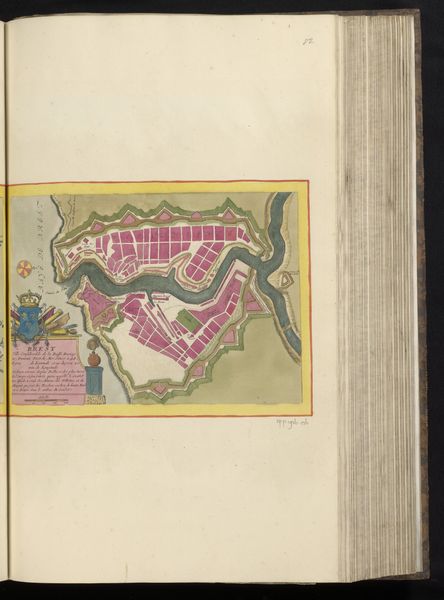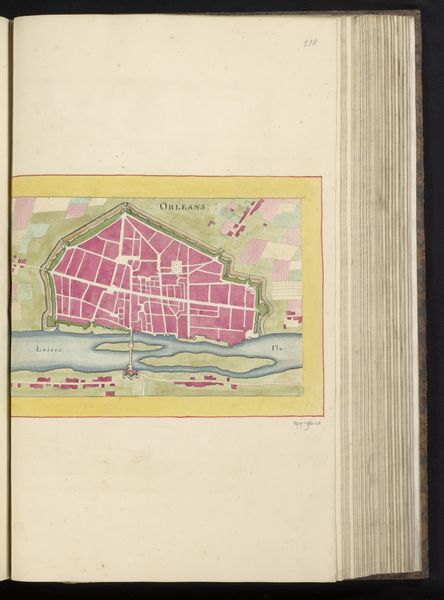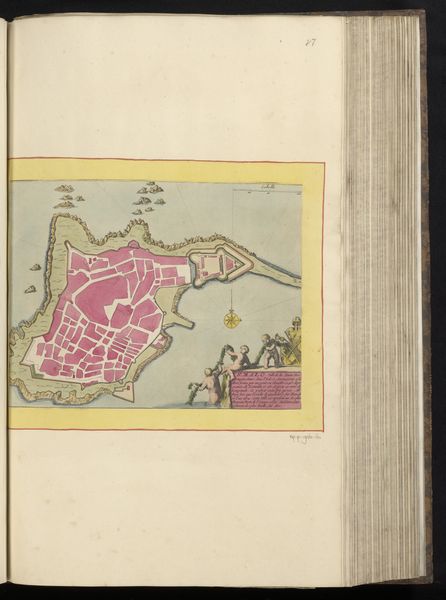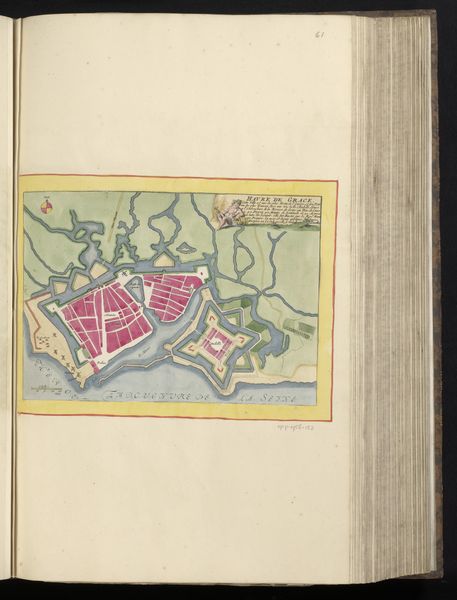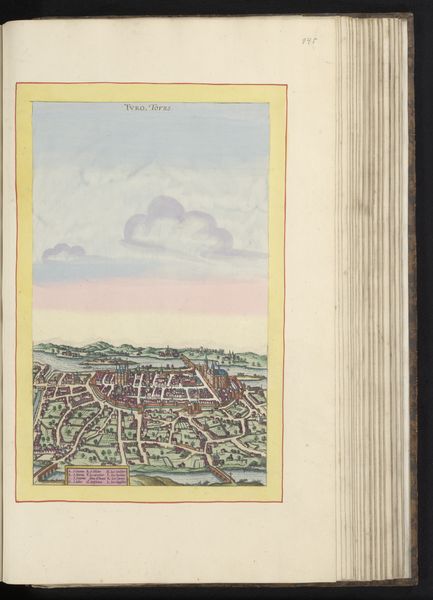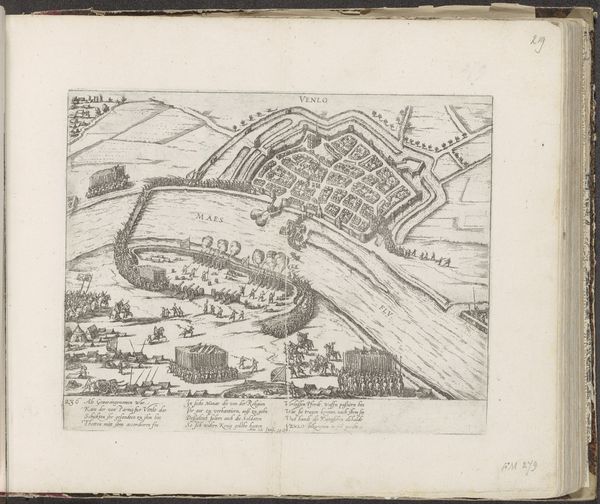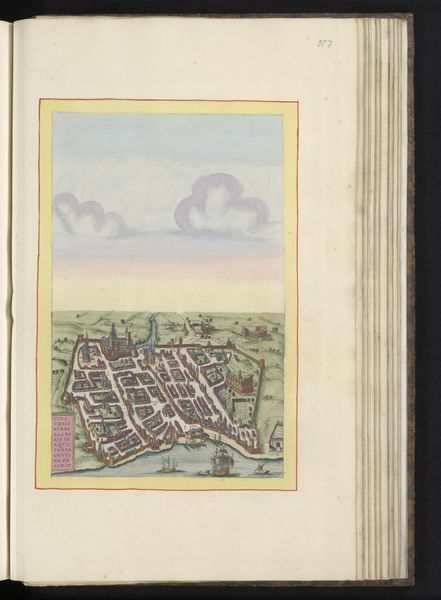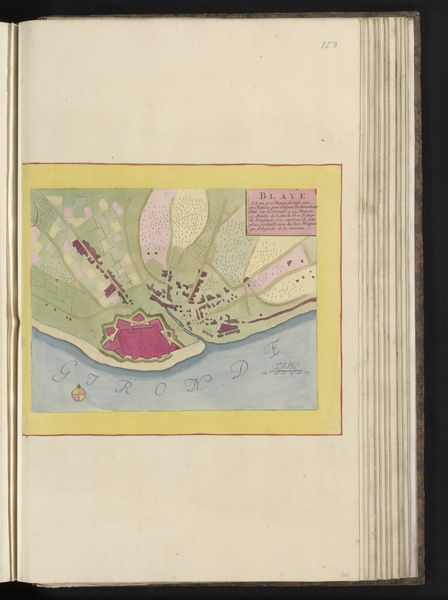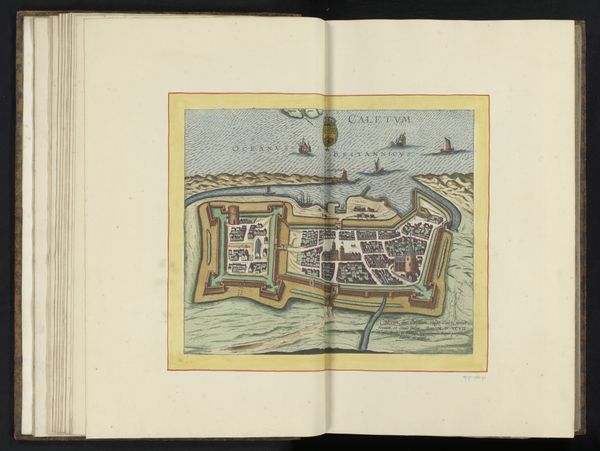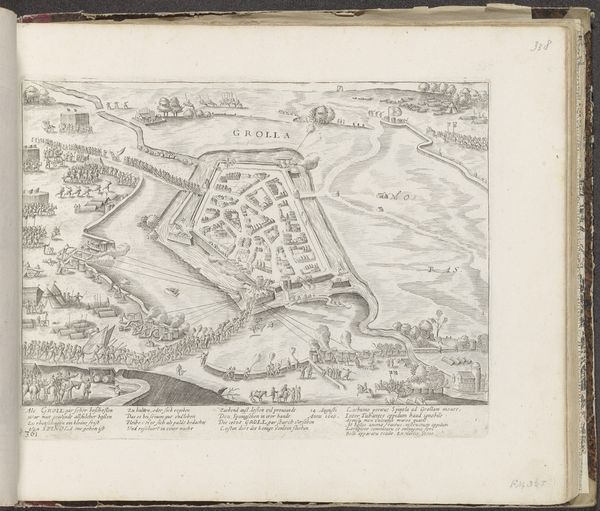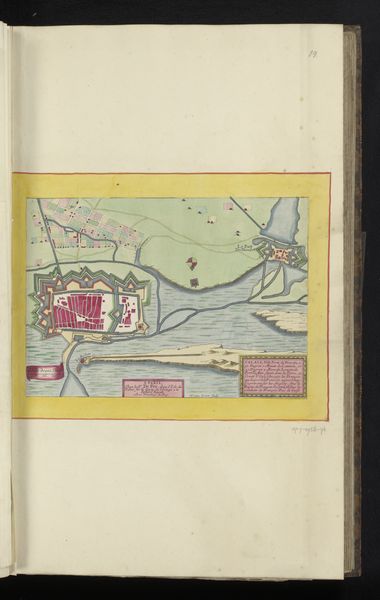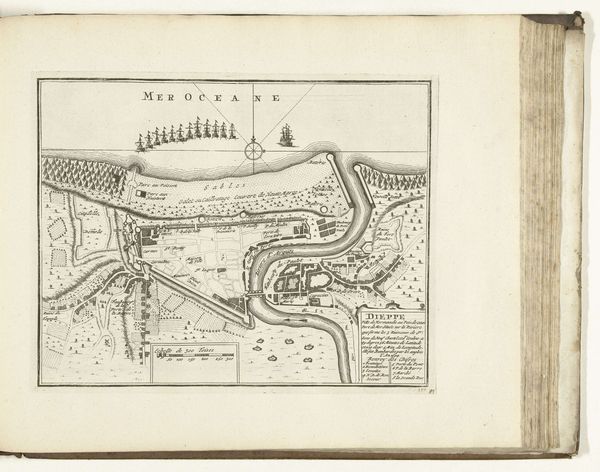
drawing, print, paper, watercolor, ink
#
drawing
#
baroque
# print
#
paper
#
watercolor
#
ink
#
coloured pencil
#
cityscape
#
history-painting
Dimensions: height 209 mm, width 267 mm, height 532 mm, width 318 mm
Copyright: Rijks Museum: Open Domain
Editor: Here we have an interesting print from around 1690-1700 titled “Plattegrond van Dieppe,” made with ink, watercolor and colored pencil on paper. It depicts a bird’s-eye view of the city, almost like a detailed map. I'm struck by the formality of the layout, yet there's something lively in the coloring. What do you make of this particular cityscape? Curator: Well, what immediately catches my eye is the complex interplay between power, representation, and urbanization that’s at play here. Maps like these were not neutral depictions; they served a crucial ideological function. In what ways could such visual representations consolidate authority? Editor: I guess it's a way of showing control over a territory? A claim, perhaps? Curator: Precisely! Consider Dieppe's history as a significant port and a site of conflict. The map meticulously documents the city's fortifications and layout, emphasizing its strategic importance. This isn’t merely about geographic accuracy. It's a power play enacted through cartography. How does understanding its historical context affect your interpretation of the visual choices here – the vibrant coloring, the precision of the lines? Editor: It does seem more deliberate now, less about just showing the city. The colors make it feel important. It is not like some dull document. Curator: Absolutely. Also, let's think about accessibility: who do you imagine would have seen this image? The intellectual elite, members of the military perhaps? This was for a select viewership and probably excluded most of the actual inhabitants, thereby reinforcing existing class divisions and control over the narrative of Dieppe's identity and spatial relations. Editor: So it's a symbol of control not just over land, but also over how people perceive the land and the power dynamics within it. I hadn't considered that aspect. Curator: Exactly. Recognizing the inherent biases in visual representation empowers us to ask critical questions. We can understand this artwork not just for its aesthetic qualities, but also for its socio-political implications and legacies that shape our understanding of history. Editor: I learned a lot about how the creation of a cityscape artwork like this one involved more than meets the eye! Curator: Me too. This image can continue to teach us a lot!
Comments
No comments
Be the first to comment and join the conversation on the ultimate creative platform.
